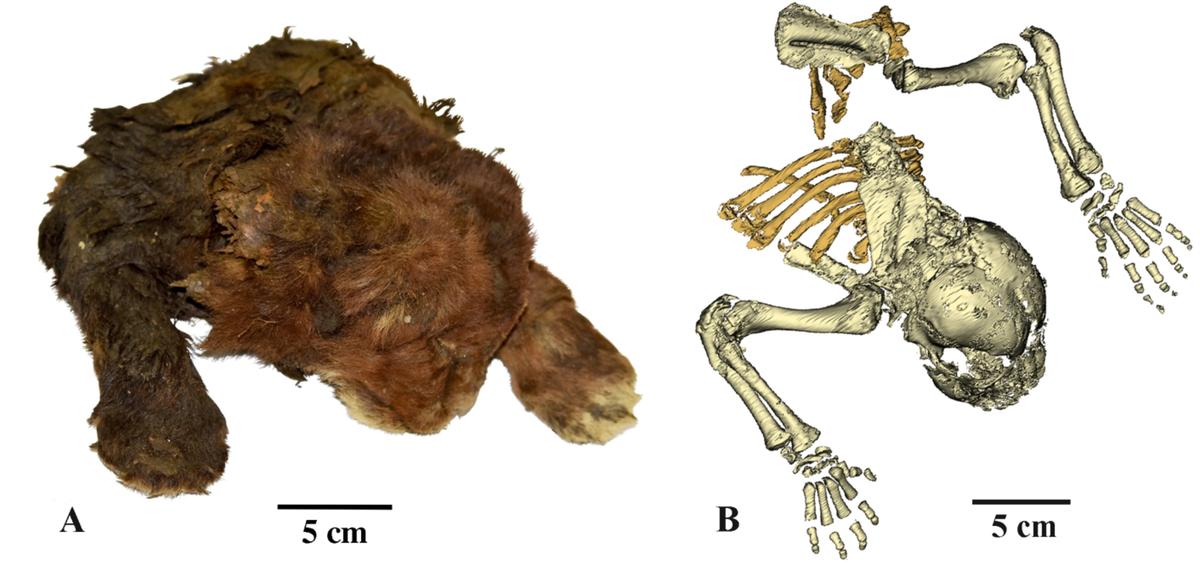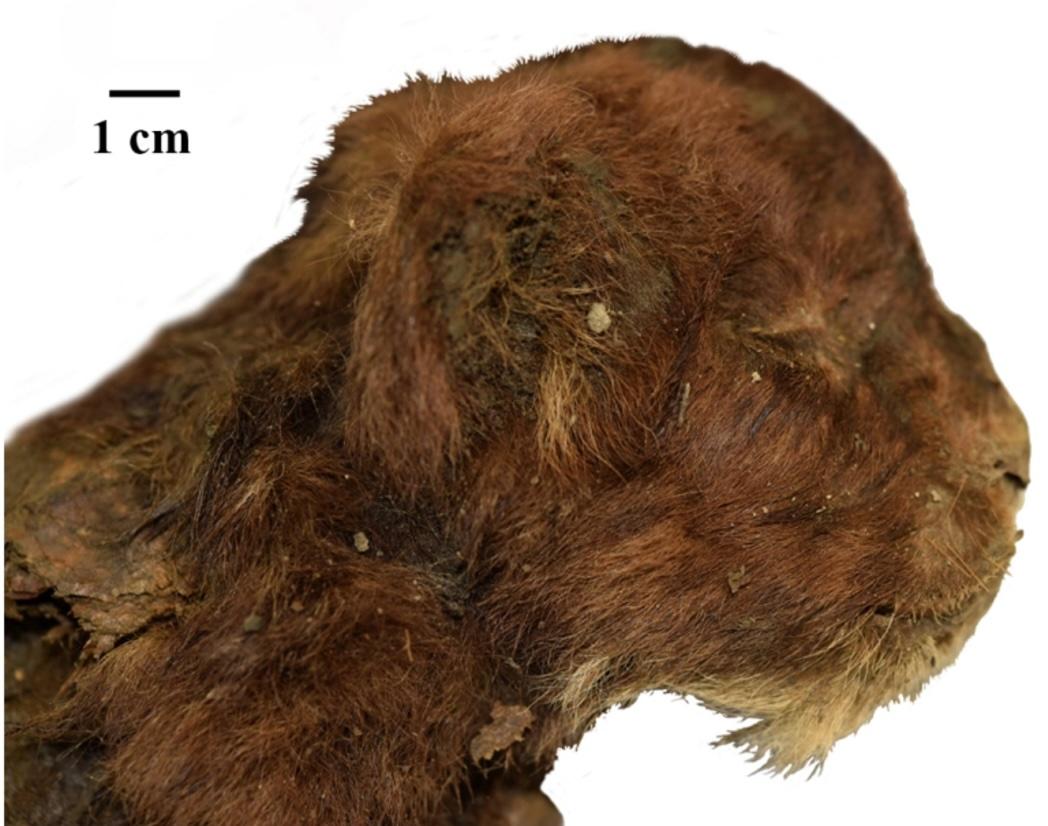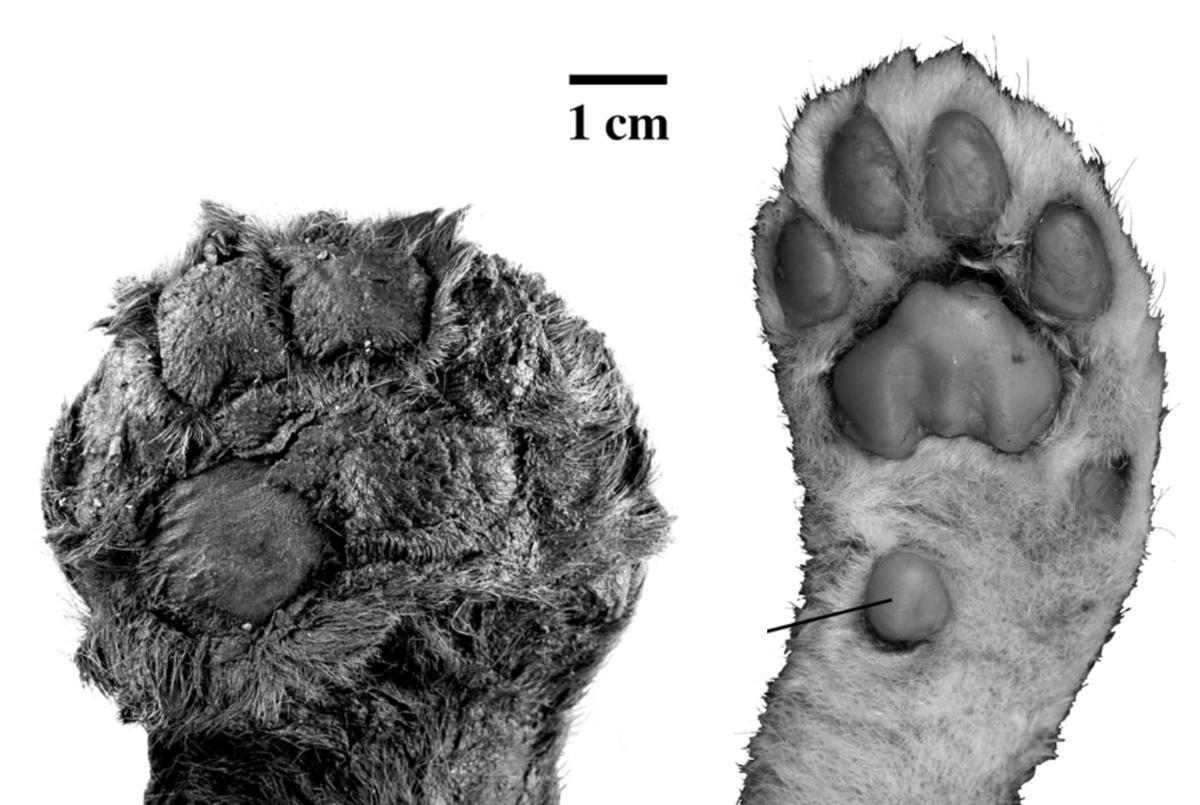Badyarikha River, Siberia —(Map)
In 2020, a group of explorers looking for mammoth tusks in eastern Siberia made a surprising discovery – the mummy of a 35,000-year-old saber-toothed kitten. The find is the first of its kind and is giving scientists a new look at saber-toothed cats.
The kitten mummy was found in the permafrost near the Badyarikha River in Siberia. Permafrost is a layer of ground in Arctic and Antarctic areas that remains frozen. As the world has warmed due to climate change, areas of permafrost are thawing, revealing secrets long buried and frozen.
Saber-toothed cats were large meat-eating mammals that lived thousands of years ago. They were known for their long, sharp teeth. Though they looked a bit like tigers or lions, saber-toothed cats died out around the end of the last Ice Age, and aren’t related to any kind of cats that exist today.

(Source: Lopatin et al., [CC BY 4.0],Scientific Reports.)
Scientists have studied the bones of saber-toothed cats before, including a saber-toothed kitten’s. But this is the first time a saber-toothed mummy has been found, giving scientists a chance to learn about its muscles, skin, and fur. And even about things like the size of its ears.
The kitten was very young – only about three weeks old when it died. By studying the mummy with CT scans, the researchers were able to identify it as a Homotherium saber-toothed cat. Homotherium was the last kind of saber-toothed cat known to have existed. Homotherium adults were about the size of a lion, but thinner, and good at running long distances.
Scientists already knew this. They also knew that these cats had a very thick neck. In this case, the kitten’s neck was about twice as thick as a lion cub’s would be. But the well-preserved mummy also brought some surprises.

(Source: Lopatin et al., [CC BY 4.0],Scientific Reports.)
One surprise was the color of the kitten’s soft fur. It was a deep, dark brown. Many modern big cats, like lions and pumas, are born with spots as babies. These spots often fade as the animals grow But the saber-toothed kitten had no spots at all.
The kitten had clumps of hair at the sides of its mouth. It’s possible that adult saber-tooth cats may have had hair on their faces – perhaps similar to a beard. The kitten hadn’t developed its long teeth yet, but it did have a long upper lip. That could suggest that the long teeth of Homotherium adults were kept covered most of the time.

(Source: Based on images from Lopatin et al., [CC BY 4.0],Scientific Reports.)
The kitten’s paws were round, like those of a lynx. But the pads on the paws were square, unlike the pads on modern cats. The kitten also didn’t have a pad on the back of its wrist, like cats and dogs do today. The scientists think the Homotherium’s paws might have made it easier for it to walk on snow.
The scientists have learned a lot, but they still have more to study. They plan to examine the kitten much more closely, including studying its DNA.
The researchers are hopeful that more Homotherium mummies might be discovered one day – perhaps even an adult.
😕
This map has not been loaded because of your cookie choices. To view the content, you can accept 'Non-necessary' cookies.
